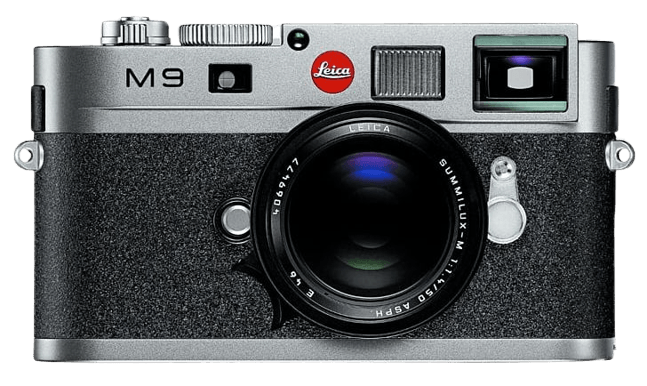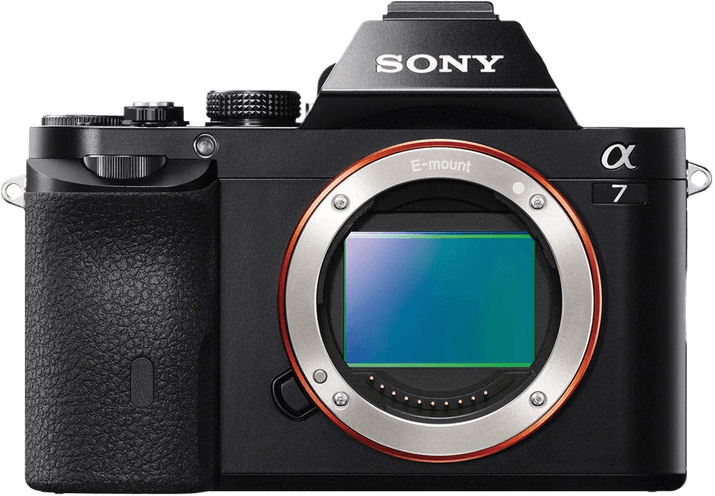Leica M9 vs Sony a7 Comparison
Leica M9

Sony a7

The Sony a7 outperforms the Leica M9 with a score of 63 to 34. Both cameras are mirrorless and were released in 2013 and 2009, respectively. They share similarities in their camera type and their launch prices, with the Leica M9 priced at $5500 and the Sony a7 at $1700.
The Sony a7 has a higher score because it is a more advanced camera. It is lighter, weighing 474g compared to the Leica M9’s 585g, and offers a more compact size of 127 x 94 x 48mm versus the Leica M9’s 139 x 80 x 37mm. This makes the Sony a7 more portable and user-friendly.
However, the Leica M9 has its own advantages, such as its unique design and the prestigious Leica brand. Considering all these factors, the Sony a7 emerges as the superior choice due to its modern features, compact size, and lighter weight, while the Leica M9 remains a solid option for those who value design and brand prestige.
Leica M9 vs Sony a7 Overview and Optics
The Sony a7 triumphs over the Leica M9 in optics with a 28-point lead, scoring 70/100 compared to the Leica M9’s 42/100. Both cameras share some specifications, such as full-frame sensor size and lack of image stabilization. However, the Sony a7 boasts superior specs in other areas, contributing to its higher score.
The Sony a7 has a 24-megapixel sensor, while the Leica M9 only has 18 megapixels. This higher resolution results in sharper images with more detail. Additionally, the Sony a7 has a faster shooting speed of 5 frames per second (fps) compared to the Leica M9’s 2 fps, allowing for better capture of fast-moving subjects. The Sony a7 also features a CMOS sensor and Bionz X processor, contributing to its higher DXOMARK score of 90 compared to the Leica M9’s CCD sensor, Maestro II processor, and DXOMARK score of 69.
The Leica M9 does have a unique advantage with its Leica M lens mount, which allows compatibility with a wide range of high-quality Leica lenses. However, this advantage is not enough to outweigh the Sony a7’s superior specifications.
The Sony a7 is the clear winner in terms of optics, with higher resolution, faster shooting speed, and better sensor performance. The Leica M9’s lens mount compatibility is a positive aspect, but it does not make up for its shortcomings in other areas. As a result, the Sony a7 is the better choice for photographers seeking top-notch optical performance.
Leica M9 vs Sony a7 Video Performance
When comparing the video capabilities of the Leica M9 and the Sony a7, it is important to note that the Leica M9 does not have any video functionality. This means that if video recording is a priority for you, the Leica M9 would not be a suitable choice.
On the other hand, the Sony a7 does offer video recording capabilities. Its video score is 56 out of 100, which is a decent rating for a camera in its class. The Sony a7 has a maximum video resolution of Full HD, with dimensions of 1920 x 1080. This resolution is suitable for most general video recording needs, such as capturing memories, creating content for social media, or even some professional applications.
The Sony a7 also has a maximum video frame rate of 60fps, which allows for smooth video playback and the ability to create slow-motion effects in post-production. However, it is worth noting that the Sony a7 does not have built-in time-lapse functionality. This means that if you wish to create time-lapse videos, you would need to use external software or accessories to achieve this effect.
Taking these factors into consideration, it is clear that the Sony a7 is the better choice for those who require video capabilities in their camera. The Leica M9, while an excellent camera in its own right, simply does not offer any video functionality. Therefore, if video recording is important to you, the Sony a7 is the more suitable option.
Leica M9 vs Sony a7 Features and Benefits
The Sony a7 wins the features comparison with a score of 57/100, while the Leica M9 scores 17/100. Both cameras lack a touchscreen and GPS, and neither has Bluetooth connectivity. However, the Sony a7 outperforms the Leica M9 in other aspects.
The Sony a7 has a larger 3-inch screen, compared to the 2.5-inch screen on the Leica M9. Additionally, the a7’s screen resolution is significantly higher at 1,230,000 dots, whereas the M9 has a resolution of 230,000 dots. The a7 also features a flip screen, which the M9 lacks, providing more flexibility for framing shots. Furthermore, the Sony a7 comes with built-in Wi-Fi, allowing convenient wireless transfer of images and remote control of the camera, a feature absent in the Leica M9.
On the other hand, the Leica M9 has no distinct advantages over the Sony a7 in terms of features. The M9’s lower score in this comparison does not offer any benefits or unique capabilities that the a7 lacks.
The Sony a7’s superior features, such as a larger and higher-resolution screen, flip screen, and Wi-Fi, make it a better choice for photographers seeking a camera with advanced functionalities. The Leica M9, with its lower feature score, does not provide any advantages over the a7. Therefore, the Sony a7 is the clear winner in this comparison due to its better features.
Leica M9 vs Sony a7 Storage and Battery
The Leica M9 and Sony a7 both score 21/100 in storage and battery. They share similarities in this category, with each having one memory card slot and accepting SD/SDHC cards. Neither camera has USB charging capabilities.
The Leica M9 edges ahead with a slightly longer battery life of 350 shots compared to the Sony a7’s 340 shots. Both cameras use different battery types, with the Leica M9 using a BP-SCL1 and the Sony a7 using an NP-FW50.
However, the Sony a7 supports additional memory card types, such as SDXC and Memory Stick Pro Duo/Pro-HG Duo, which may be an advantage for users with a variety of memory card formats.
In this comparison, the Leica M9 has a marginally better battery life, while the Sony a7 offers more versatility in memory card compatibility.
Leica M9 vs Sony a7 Alternatives
Still not sure which camera to choose? Try these popular camera comparisons for more inspiration:
